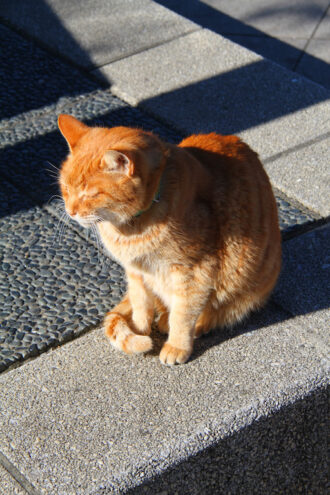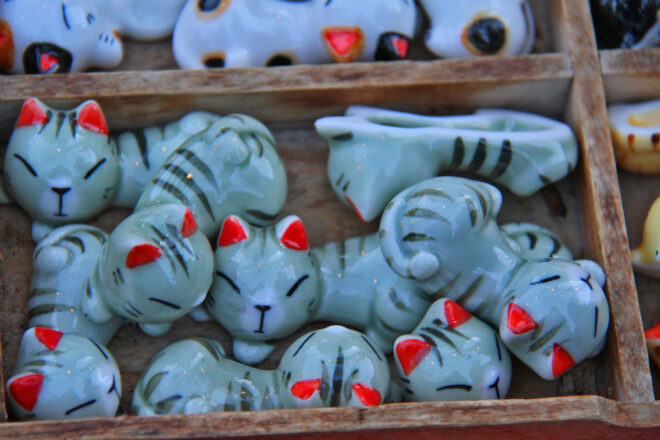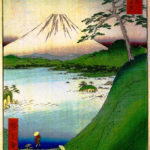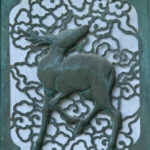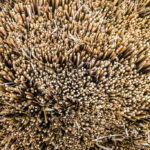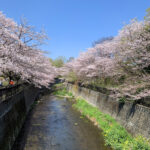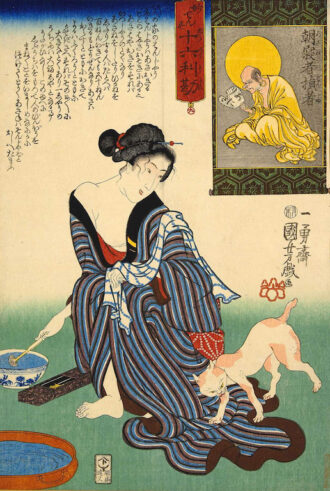
Ukiyo-e woodblock artists often depicted cats with geisha, and this is one such work by the nineteenth-century Utagawa Kuniyoshi. PUBLIC DOMAIN
It may appear difficult to believe in an age when just about every other image or video on the Internet somehow seems to feature a cat, but there was once a time when felines did not command quite such exalted status. Before “Cats Took Over the Internet,” as expressed in the title to a 2015 exhibition in a New York museum, they were just one of many domesticated species that found themselves, happily or otherwise, locked into a state of coerced coexistence with humans. And that was certainly true of Japan in older days.
Cats were introduced to the country from Korea and China in ancient times, though there are no records as to when they first arrived. Historical accounts indicate that a black cat was presented by China to ninth-century Emperor Koko and one by Korea to Emperor Ichijo, who ruled until 1011, so the creatures then were clearly regarded as rare and highly prized. However, that prestige did not prevent Sei Shonagon, the famed author of The Pillow Book—an insightful compendium completed in 1002 of her observations and musings, a substantial part of which consists of delightfully opinionated lists—from including “The inside of a cat’s ear” among the seven items she cites for “Squalid Things.”
Whatever other Japanese may have thought about the details of feline auditory organs, there is no doubt that at one time in their predilection for domestic companionship, the Japanese simply went to the dogs. According to a survey conducted in 1976, just three to five percent of the country’s 34 million households then possessed cats. By contrast, 12 to 15 percent of households were home to canines. Half a century later, cats had clawed their way to the loftier position in the nation’s affections. In 2017, the estimated number of pet cats in Japan exceeded that of dogs for the first time, according to the Japan Pet Food Association, a position the felines maintained the following year. The association predicted that the catty hegemony was unlikely to discontinue.
But even if they may want one, not everyone in Japan is able to own a cat: many Japanese landlords look askance at the prospect of scratched damage that cats might wreak on walls, and so they ban the animals. Individuals otherwise lacking the chance to enjoy some feline quality time can turn to cat cafés. For a fee at such places, customers can pet a puss and cuddle a cat to their heart’s content. Little toys with string and wool are usually on hand to help customers capture the affection of the furry ones.
Back in a time when cats had yet to reach their present ascendency as household pets, images of the creatures were certainly no unfamiliar sight in Japan. The figurines known as maneki-neko (“beckoning cat”) have long been used as talismans that are believed to bring good luck to their owners. Maneki-neko depict a sitting cat with one paw raised in the Japanese gesture of beckoning people, and the mascots are placed in a prominent position in stores and businesses that rely on heavy customer traffic. To ensure that the cats do not go unnoticed in their PR work, the figures typically appear in such bold colors as white, black, gold and red. And so that potential customers do not miss the implication of the raised paw, it sometimes receives a little mechanical assistance in the form of a battery- or solar-powered movement that makes the arm constantly rock back and forth. Beyond its original use, the maneki-neko image has today been co-opted in a dazzling variety of goods from air fresheners and plant pots to key chains and piggy banks.
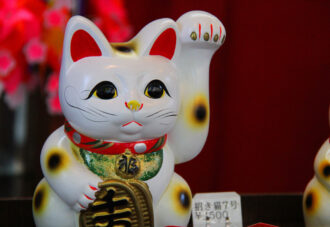
Maneki-neko are popular good-luck talismans that are used to help attract custom to many stores and businesses. DAVID CAPEL PHOTO
In contrast to former years, Japan may now have welcomed cats to its national bosom, but it is of course possible to have too much of a good thing. There are a number of places around the world that go by the name of “Cat Island,” but it would seem to be only Japan that has “cat islands,” which are so called owing to their overwhelming number of resident felines. Japan comprises almost 7,000 islands, and around a dozen of that number are regarded as cat islands. The proportion of human versus feline residents does of course vary by island. With perhaps the best-known place, Aoshima, a tiny island just 1.6 kilometers long in the Inland Sea in Ehime Prefecture, there are just a dozen humans but over 150 cats. The animals were apparently introduced to try and reduce the rodent population on an island that was reliant on the fishing industry. But then, the cats apparently decided to take over. Even diehard feline devotees might find things, well, just a bit too catty there.

Located close to Tokyo, Enoshima is one of Japan’s cat islands, and this teahouse and store on Enoshima are certain to appeal to Hello Kitty fans. DAVID CAPEL PHOTO
In the traditional world of entertainment in Japan, cats were often associated with geisha, who were sometimes referred to as neko (“cats”). Some people believe that the nickname derived from the mysterious air and sleek cat-like charms of those ladies as they purred on cue when dealing with their male clientele. Others consider that it refers to the fact that the shamisen, a banjo-like instrument and a vital element in geisha parties, has a body that is usually covered with cat skin.
Around the world today, the best-known Japanese cat is by far the engaging fictional creature known as Hello Kitty. Having come into being in 1974, the Hello Kitty character has bathed in her iconic global glory as a staple of Japanese culture. Aside from foodstuffs and technology, there is nary a product that Hello Kitty does not somehow find it within her catty capacity to endorse. According to the Hello Kitty backstory, the famous feline is a perpetual third-grade student who lives outside London. Hello Kitty may be diminutive, but as of 2019 she was the second-highest grossing media franchise of all time. Now that is not at all bad for a cat with just three whiskers on either side of a face that nonchalantly possesses absolutely no mouth whatsoever.
David Capel is a journalist living in Tokyo.

